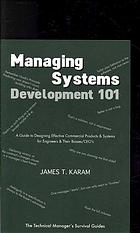

Most ebook files are in PDF format, so you can easily read them using various software such as Foxit Reader or directly on the Google Chrome browser.
Some ebook files are released by publishers in other formats such as .awz, .mobi, .epub, .fb2, etc. You may need to install specific software to read these formats on mobile/PC, such as Calibre.
Please read the tutorial at this link. https://ebooknice.com/page/post?id=faq
We offer FREE conversion to the popular formats you request; however, this may take some time. Therefore, right after payment, please email us, and we will try to provide the service as quickly as possible.
For some exceptional file formats or broken links (if any), please refrain from opening any disputes. Instead, email us first, and we will try to assist within a maximum of 6 hours.
EbookNice Team

Status:
Available0.0
0 reviews
ISBN 10: 0791802582
ISBN 13: 9780791802588
Author: James T. Karam
This book provides specific, practical advice for engineers who are advancing beyond their technical specialty and find themselves working with other specialties necessary to the development of a complex system or product. They continually face a variety of issues that were invariably never addressed in their schooling: dealing with specifications, project plans, and budgets; improving quality by working with "downstream" functions such as production and service; resolving incompatibilities and bugs under a variety of test conditions; providing technical direction and reviews; and more. Based on "lessons learned" by the author over a forty-year career developing complex systems products, the book presents basic principles that are applicable whether you are in a bureaucratic, multi-national corporation or one with the founder still in control. Regardless of an organization's size or the particular products, the engineering management issues are eerily the same. Systems are systems, and the engineering process basics, derived largely from aerospace, remain the key to success anywhere. Chapter titles typically end in "101" because the basics are usually where the problems lie, as well as their solutions. This book is concise, but the content is dense. As such, it will also provide a succinct refresher for more experienced professionals and their management when facing challenges.
Chapter 1 : Project Systems Engineering 101 Design Requirements
Chapter 2 : Program Planning 101 Noah's Principle & Earned Value
Chapter 3 : System Evolution Bid & Proposal
Chapter 4 : Often Forgotten Programming 101
Chapter 5 : User Interface Design 101 Clickable Mockups, Often in Lieu of Specs
Chapter 6 : Presentations 101
Chapter 7 : Find & Flush the Full In-Boxes
Chapter 8 : Continuous Improvement 101 Categorizing Defects
Chapter 9 : Performance Ranking 101
Chapter 10 : Incentive Criteria 101
Chapter 11 : Matrix Organization 101
Chapter 12 : Tailor Your Behavior to the Software, not Vice Versa I've Never Found the Software that I'd Rather Write than Buy Closing Thoughts Additional Reading
managing the development of large software systems royce
managing the development of large software systems concepts and techniques
managing the development of large software systems pdf
managing the development of large software systems 1970
managing risk methods for software systems development
Tags: James Karam, Managing systems